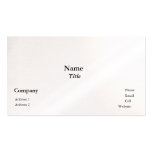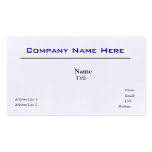For a lot of brands, local marketing strategies are essential to overall success because they allow you to reach a targeted, nearby audience. As a starting point, if your business is interested in leveraging local marketing, you should develop tactical approaches that have a strong connection to search engine marketing. Make sure you’re receiving as much digital “real estate” as possible in keyword relevant SERPs (search engine results pages). Sure, copy is effective, and visuals can be compelling, but in terms of growing your online presence, it all begins with where you appear in a search engine results. Typically, most of the traffic you drive to your site will come from your search engine marketing, so it’s crucial to think about your organic presence and what your search results look like.
Consider the tactics below to help your business enhance their local marketing:
Local Title Tags
Title tags targeting specific geographic locations should be included in any local marketing strategy. To highlight this, consider a New York-based organization. Adding “NY” or “NYC” to the end of your title tags is an incredibly easy way to focus on locality with search results. Including these geographic terms is a great indicator to search engines that you’re located in a particular area, and act as a signal to consider that facet when presenting search results. That being said, adding location to your tags is important. It shouldn’t be the sole focus of a title tag or take away from the user-experience in any way since the main objective of title and header tags is to help search engines understand content and get users the best experience possible with your website.
Social Media Integration
Surprisingly, even though it is quite simple to integrate, a lot of brands fail to include social media into their local marketing strategy. Taking steps to add a description to Twitter that highlights where your company is located optimizes your profile for local users and helps Google rank your Twitter page for local search, and this requires little to no effort at all. On Facebook, you can more specifically define your address on a map, ensuring that users are interacting with your brand or looking to find out contact information to easily identify what they need. Pinterest is another example of a social platform that is often not used to its full potential for start-ups. Vivid imagery can only do so much. If you have products that you’re selling, make it easier for users to purchase them and consider Pinterest’s new advertising platform. Each post should make it very clear as to where and how a user can purchase a product, otherwise the opportunity to make a sale is essentially lost.
Google Maps
The maps feature in Google is often omitted from local marketing strategies when brands are first starting out, likely due to timing or lack of resources. Defining where your business is on Google Maps is incredibly important to users and search engines alike – especially if you’re a B2C with a brick-and-mortar location. When users search for your brand name, if you have a storefront, you want them to know exactly where they can go to find you so your business can go from online to offline as easily and efficiently as possible.
Google ‘My Business’
If you don’t already have one, set up a Google “My Business” page — they are particularly helpful for local businesses. By providing details about your offline presence such as your hours, phone number, relevant photos and a section for customer reviews, when users conduct a branded search, on the right side of the SERP you’ll get a special branded result complete with images and some of the information you defined for your account. Not only does this add legitimacy to your business and instill a trust factor with your users, it also increases click through rate on your search results.
Site Links
Site links are the set of links to landing pages that appear below a branded search result online. For the most part, these can be determined in Google Webmaster Tools in just a few steps. While you can’t select each specific page, you can indicate which pages you would like to exclude. When someone searches for your brand, they’re provided with more options to click different pages and elements of your business.
PPC
Paid advertising is an easy way to claim additional digital real estate. A lot of studies have shown that if you’re in a high position in search results for both organic and paid results, that your click-through rate will be much higher. Seeing your brand name in both locations keeps your company on the minds of consumers — the more they see it, the more likely they will be to recall and recognize it. Using search engine marketing and PPC initiatives in tandem can be incredibly useful for brands just starting out. Particularly for local companies, paid digital advertising allows you to exclude certain locations so that you can focus your resources and efforts on the users that are most likely to convert and visit your business.
Local Marketing: A Checklist for Success
For any effective local marketing strategy, the above tactics should be included and serve as a checklist for success. In addition to the above, geo targeting is an important local strategy to consider. If your budget and resources allow for it, geo fencing and targeting specific individuals and serving them with incredibly relevant content can be very effective at driving conversions and fostering growth. If you’re a local store and know that users nearby are at shops offering similar products, you can use hyper-local targeted marketing to serve those customers within a specific geo-grid special coupons, deals, or advertisements to their mobile phone to promote your business. This is just another way to leverage location take your online initiatives offline.







No comments:
Post a Comment